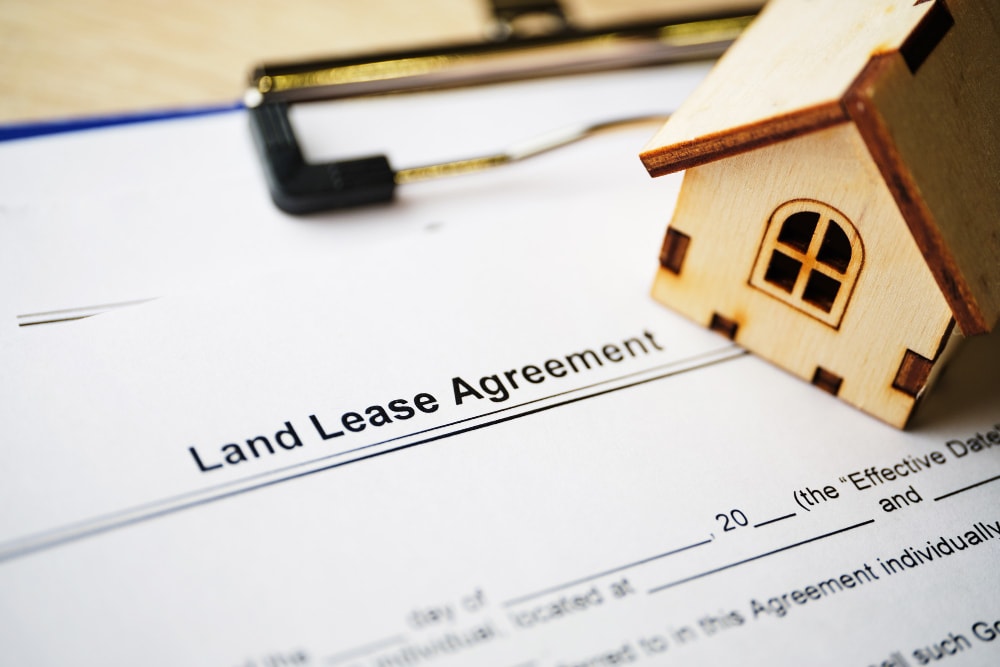Land Use Policies and Their Impact on Real Estate in Kenya
Like the Great Rift Valley that forms Kenya's landscape, land use policies are shaping the future of real estate development. This comprehensive article seeks to determine how these land use policies affect the Kenyan real estate market, including policy initiatives, development capability, and property rights. They also enhance the utilization of resources through historical, environmental management, and economic factors to support economic development without compromising on regulatory standards. Further, this detailed article explores critical and broader proportions of land use policies in Kenya and offers information on the real estate market implications.
It must be noted that land use is complemented by proper zoning laws based in Kenya that act as a framework for how land can be used, conserved, and developed. These land use regulations define the uses allowed in particular zones, outlining to public and private players where residential zones, industrial, agricultural, and commercial uses occur. Zoning laws differ from one area to another, and since there is population growth, places like Nairobi will require stringent zoning laws due to the small space, while in the villages, zoning may have different takes.

The adaptability of land use policies in Kenya is a testament to the country's commitment to addressing the evolving needs and ownership structures. Since independence, the country has undertaken massive land reform initiatives to rectify injustices in land distribution.
Legislative frameworks such as the Land Act 2012, the Environment and Land Court Act 2011, and the establishment of the National Land Commission have played a pivotal role in formulating the current land use regulations.
Several institutions oversee the establishment and enforcement of land use and zoning regulations in Kenya:
The Ministry of Lands and Physical Planning (MoLPP) is mainly concerned with policy-making. MoLPP determines the intended use and proper management of land as provided by legislation and policies.
National Land Commission (NLC): The National Land Commission has the significant responsibilities of managing land issues, regulating land title issues, compensating historical land grievances, and coordinating land policy overall. The National Land Commission Act created the National Land Commission (NLC) to regulate and administer State land, inquire into historical land remarks, recommend appropriate measures, and facilitate fair share in access to land. The NLC also supports counties in the management and promotion of sustainable use of this resource, supporting the laws on land management.
The National Government: Kenya has a devolved system of government through which duties are divided between the National and County Governments. The National Government oversees land issues, policies, and land laws, and the County Governments deal with land matters within the counties, including the approval of construction and development plans and proper zoning of building areas.

County Governments: Each county government is legally bound to enforce the code governing zoning at the county level. The institution coordinates with MoLPP to synchronize the country’s policies with its local priorities, ensuring an efficient and effective land use management system. Additionally, the County Executive Committee Members are political appointees entrusted with specific responsibilities within the County Government, such as land, housing, and urban development. A County Executive Committee Member (CEC) is responsible for implementing county laws on physical planning, physical development, and management of public land in the counties.
The Kenya Urban Roads Authority (KURA) and Kenya Rural Roads Authority(KeRRA) play a significant role in Kenya's land use. In addition to their core responsibilities of offering infrastructure development services, these agencies dictate areas where roads and other infrastructure can be laid. Their influence on land use is essential for the real estate market to consider when planning developments.
With their blended powers, these institutions significantly affect the distribution of land and zoning and act as key players in promoting sustainable development within Kenya. Their roles are crucial in shaping the future of Kenya's urban centers and rural areas.
The Land Control Board is the governmental authority that provides a comprehensive legal framework for transferring agricultural land.

These boards must supervise activities such as selling or leasing agricultural land situated in a land control area, so that land use meets regional agricultural productivity targets and community standards. Therefore, having the Land Control Board consent is crucial before proceeding with more land transactions.
This Act helped create the National Land Commission (NLC), whose main functions include managing and administrating State land, undertaking research, and ensuring that historical land issues are addressed for Kenyans.
This is primarily in the pre-independence era, which is to be addressed. Current and future Kenyans should be allowed to acquire state land fairly. The NLC also cooperates with county governments on the sustainability of land and ensures that land management laws are effectively complied with.
The Land Control Bill seeks to enhance the Land Control Act by clarifying and improving the work of Land Control Boards and categorizing agricultural lands. Its main aim is to prevent the conversion of crop production land for use by those who do not need it or are contrary to government policies.
The Physical Planning Act lays down the land-use principles in urban centers and rural areas to encourage proper planning. It spells out the planning process of how land is zoned, the procedural framework for development control and planning permission, and the mandates for county governments to comply with the regional physical development framework.
Land in Kenya is typically classified into the following zones:
Residential Zoning: This zone is reserved for residential property, both high and low rise, that is, apartments, townhouses, and single homes. The requirements may differ slightly in each county where the plot will be developed.
Commercial Zoning: Business areas are mainly designated for commerce, which sells goods and services, including offices, stores, and recreational facilities.
Industrial Zoning usually applies to factories, manufacturing plants, and storage facilities. Industrial areas typically have laws on waste disposal and the environment.
Agricultural Zoning: Also located mainly in the countryside, agricultural zoning involves keeping land for farming and is usually accompanied by a limited use clause.

Mixed-Use Zoning: This zone, also known as the allowable use or commercial use zone, is an area where trading and dwelling are allowed. It is a common feature in regions with high population density, promoting a harmonious balance of uses.
Zoning ordinances substantially affect property development projects' size, characteristics, and price. The law also restricts the development's property type, size, and density within a zone. For instance, in Nairobi, while high-rise buildings are allowed in certain areas, developers can fully exploit the space to construct residential apartments, hence responding to housing demands.
On the other hand, restrictive zoning in agricultural or environmental conservation zones may hinder real estate prospects but retain Kenya’s natural and agricultural resources which enhances environmental sustainability.
The land use planning process in Kenya involves several steps:
Initial Assessment: This involves assessing existing land use and making impact statements on the environment.
Public Consultation: This crucial step ensures that the concerns of community stakeholders, including the local authorities, are heard and actively sought. Providing suitable projects for the community is essential as it is their public land. This relevant example demonstrates public participation in land use regulation and property development.
Drafting of Construction and Development Plans: Proposals and policies are developed from research findings, need assessments, and public opinions to provide a framework for growth and competent utilization of available land.
Approval and Implementation: The construction and development plans described above are submitted to the respective government bodies to seek development permission and approval and can be implemented.
Monitoring and Evaluation: Each assessment guarantees compliance and versatility regarding the claims and situations.
Recent land reforms in land zoning reflect Kenya’s commitment to promoting sustainable development, environmental sustainability, and urban planning:
Affordable Housing Agenda: The Kenyan government has taken proactive measures to provide an affordable housing initiative, targeting lower—to middle-income earners for shelter. This demonstrates the government's commitment to addressing the housing needs of its citizens.
Digital Land Registry: The broader process of moving record keeping to digital means, for example, through the Ardhisasa platform, modernizes the system and helps avoid land-based disputes. This digital transformation is a positive step towards efficient and transparent land management in Kenya.
Environmental Conservation: New zoning legislation in Kenya aims to preserve the environment by preventing the development of environmentally sensitive areas.
The future of land use and zoning in Kenya points towards more integrated and technology-driven planning:
Smart Cities: Places like the Konza Technopolis are part and parcel of Kenya’s ideas of smart cities, which combine IT with efficient city layout.

Green Zoning Initiatives: As climate change becomes increasingly sensitive, Kenyan zoning laws are expected to include fully enhanced green zoning standards in green building construction.
Public-Private Partnerships: The synergy between the public and private sectors to facilitate infrastructure development may enhance the speed of developments and correct use of the available land.
Public involvement is a staple of Kenya’s rules guiding land usage, given that zoning involves the public domain. Commoners and the public can influence zoning decisions at public hearings and consultation meetings. However, the public and civil society organizations play a crucial role.
They have formed advocacy groups that keep track of land use policies and report to the government about equitable and sustainable land usage, making them influential and integral to the process.
In Kenya, due diligence is a formality and a crucial step for investors and developers within the regulated market structure. It provides a sense of security and confidence in their investments. Some critical steps include:
Land Ownership Verification: The legitimate title deed of the real estate property being sold is verified to confirm the property owners to avoid litigations.
Zoning Compliance Checks: Ensure the land's zoning is appropriate for the intended use. Improper zoning can cause legal problems or limited development rights.
Environmental Impact Assessments: With a growing concern over environmental sustainability, these are needed for projects in specific areas to meet legal requirements for environmental protection.
Tax Clearance and Liens: Ensure no unpaid property taxes or outstanding liens on the land.
Therefore, stakeholders aspiring to undertake any development in Kenya must familiarize themselves with the various land use regulations to promote orderly and responsible land development. These regulations determine the purpose of a particular piece of land, what kind of construction can be carried out on it, and what type of activity can occur in a specific zone.
Understanding these land use regulations benefits developers, investors, and communities alike from greater legal awareness, environmental responsibility, and effective land management solutions. A further advantage of good understanding also means that it discourages hasty growth of buildings and constructions, the preservation of some open land for green spaces, and the rational partitioning of land for residential, commercial, industrial, and agricultural uses.
When use zones are issued in Kenya, environmental prohibitions are provided. This is mainly for sensitive ecosystem areas such as wetlands, forests, and riparian land. Development is limited to slowing down pollution and protecting the habitats of animals, plants, and water resources.
The review of environmental studies encompasses environmental impact assessments (EIAs) on the impacts that a specific project is likely to have on environmental resources. Regarding organizing for climate change, zoning regulations also play an important role in green infrastructure development and sustainable practices, with concerns related to soil erosion, deforestation, and flooding.
The IFC is part of the World Bank Group, and its mission is to promote private-sector financial solutions in developing countries. The IFC's principal goals are alleviating poverty and enhancing economic development with environmental considerations by financing business attempts and projects that generate jobs, foster economic growth, and increase access to needed resources and infrastructure.
In Kenya, the IFC has had a strong presence in sectors that influence the real estate market, including:
Affordable Housing: Based on its work with other organizations, this group collaborates with private and public entities to offer funding and advice for affordable housing. This covers financing housing projects that address single individuals and low—and middle-income earners who struggle to afford decent houses. For instance, the IFC has partnered with Kenyan banks to provide affordable mortgage choices and housing finance.

Sustainable Urban Development: The IFC is aware of Kenya's rapid urbanization tendencies and focuses on financial investments in infrastructure that could contribute to cities’ sustainability. These issues include advancing economic home construction, environmental awareness campaigns, adopting green building codes, and encouraging the creation of sustainable living neighborhoods.
Renewable Energy and Infrastructure: The IFC also provides funding for renewable energy, including solar and wind, in urban and rural areas. It also supports real estate development by enhancing the reliable power supply and updated infrastructure.
Advisory Services: Besides being a lending friend, IFC addresses challenges in governance in real estate development by offering legal and policy reforms for the orderly processing of land and property transactions. This assists in building a more stable ground on which they can invest since real estate stakeholders benefit.
Implementing zoning laws in Kenya faces several challenges:
Land Tenure Issues: Due to weak and uncertain land tenure and, particularly, the absence of clear titles, people, particularly those living in informal settlements, do not respect zonal and land use regulations.
Limited Resources and Capacity: Local statutes, such as these, are generally unenforceable because the county governments, who are responsible, lack the requisite financial and human resource capital to implement them.
Corruption and Political Influence: Corruption can lead to unlawful land parceling and unauthorized subdivisions, eventually eroding the efficiency of zoning systems.
Public Awareness and Compliance: Noncompliance is a common drawback arising from little public understanding of zoning ordinances and their utility, especially in rural regions where tradition challenges the code.
It is a fact that zoning by-laws directly affect real estate investments as it determines what may be constructed on a piece of land. For instance, single-zone residential areas confine the possibilities of commercial uses; multi-use areas can enrich property values and a variety of facilities.
Urban areas are categorized as areas of opportunity that allow an increase in the density of multifamily residential buildings, thus increasing property values and limiting it to other zones. A key aspect of Land Use Regulation is to satisfy zoning ordinance requirements so that investments can match potential returns risks. Also, they ensure that a project conforms to zoning laws to avoid penalties or legal battles that affect the property values in the long run.
You would not want to brush shoulders with the Kenyan government regarding the zoning laws. When a person violates the provisions of zoning laws in Kenya, they are penalized by being charged fines, having their structures demolished, or having their business permits suspended, or they may face legal proceedings.
The National Construction Authority (NCA) and the county governments have the authority to implement these penalties to encourage compliance. Penalties depend on the offense type, while individuals guilty of the same offense may receive harsher penalties.
In the worst-case scenario, illegal developments are brought down, meaning investors lose their cash, and stakeholders in these unauthorized undertakings lose their money.
Smart growth activities are centered around the efficient utilization of land to minimize the urban sprawl in the urban setting, which enhances environmental sustainability, improves the transport system, and promotes the development of neighborhoods requiring little or no transportation means.
Smart growth in Kenya frowns upon urban sprawl and instead encourages high-density developments, favoring growth in transit-oriented development, allowing for mixed land use, and conserving natural resources.
Nairobi satellite towns are planned and implemented with smart growth principles to ensure sustainable urban development. These policies promote resource conservation, minimize emissions, and promote the real estate development and employment of land for housing, employment, and recreation activities.
The basic idea behind inclusive land zoning is that some of the new construction projects contain some form of affordable homes to help provide several populations with homes and diversify the socio-economic segregation.
Policies for affordable houses to satisfy the housing deficit, particularly the Big Four Agenda, are an example of zoning laws being implemented across the board. Housing affordability for the low and middle class is achievable through inclusive land zoning, especially in cities such as Nairobi, intending to foster social inclusion of the low and middle class in the cities’ workforce to achieve the dream economic status.
This approach ensures that the national and county governments counterchecked the overriding market forces for real estate development against the success of affordable houses.
Don’t we all love convenience? I would also stretch my dollar for that extra treat of convenience. Integrated building plans incorporate living, working, and play facilities from a single zone, thus developing lively, sociable complexes.
In Kenya, integrated developments are rising, particularly in urban areas, since they promote workplace proximity, reduce the traffic grid, and increase convenience. These improvements boost interaction among the people, cut down on automobile usage, and bring services closer.
Such mixed-use proposals, as seen with Nairobi’s Two Rivers Mall and Garden City projects, show that when integrating multiple residential, commercial, and retail developments in one area, people, investors, and businesses are drawn towards the area, promoting local economic development.
Konza Technopolis is Kenya's first and foremost smart city, under construction 60 kilometers southeast of Nairobi. It was set to promote economic growth, enhance innovation, and promote diversity in centers of gravity other than Nairobi. A significant attribute of the Konza project is the adherence to rigid zoning and land use policy organization, which assures the project's sustainability.
Konza’s zoning laws provide leisure, commerce, living, and learning areas. The city development plan includes locations for mixed-use development, ensuring that residential areas are close to business areas to minimize time spent in traffic. These laws also include zoning the districts to achieve enough green areas, water resources, and energy-efficient structures for the environment.
The planned zoning of Konza ensures that the city imitates a spectacular dream by providing a compact and balanced community of work, living, and play areas. The project has created interest among local and international investors in technology, research, and education.
The development made at Konza provides a template for the sustainable development of any city in Kenya. It will serve as a benchmark for developing smart cities in the country. Also, it plans to coordinate the economic activities in Nairobi, helping to reduce congestion by decentralizing zoning policies.
However, Konza has the following implementation issues: slow physical development, where very few structures have been put up, and high upfront costs, which have caused prolonged time frames. However, it is a relevant example of land usage and zoning in the Kenyan urban development process.
Tatu City is a mixed-use development project in Kiambu County, about 24km from Nairobi. With residential, commercial, industrial, and recreation buildings in mind, Tatu City is a private sector-funded urban construction project planned to establish a fully functioning city with state-of-the-art facilities.

As stated earlier, the laws governing Tatu City's physical layout and development permit an equal integration of residential, commercial, industrial, and green zones. The project focuses on mixed-use to ensure people can work, live in the building, and access other leisure facilities. The district development payoff involves the physical division of industrial and commercial districts from residential and neighborhood areas to provide safety and free residents from noise and pollution.
Currently, Tatu City has adopted mixed-use zoning, attracting many investors and businesses since it is preferred mainly by middle and upper-income earners searching for well-developed houses outside Nairobi’s central business district. The current zoning of this development has contributed towards promoting compact building and less dependence on Nairobi for economic needs such as employment, education, and shopping; hence, the impact on the capital city has been minimal. The circumstances of Tatu City prove that big-scale and rapid urbanization can be driven mainly by the private sector.
Like any other city in Kenya or Africa in general, some of the development projects in Tatu City have been slowed down due to legal battles, some of which involve land issues. Also, the cost of houses in the development is still high, making it difficult for low-income earners to afford, hence the call to consider integrating housing affordability into the existing zoning regulations.
These case studies clarify the outcomes of zoning and land use policies that drive the current Kenyan city landscapes, which have mixed impacts on planned mass consumption spaces.
Property development in Kenya requires a balance to deliver sustainable physical land use policies through land use planning standards that include zoning restrictions and procedures. Such regulations define the growth of cities, areas of business and commercial activities, and the properties to be constructed.
Trends for future years include embracing and promoting sustainable development, smart cities, and green zones to be complied with by the Kenyan Property market to meet the demands of the growing population. These and other physical and land use policies and associated institutions are relevant to investing in Kenya's real estate market.
Kenya’s land policies include the Constitution (2010), which defines public, private, and community land and seeks to provide for and promote equitable and sustainable access to and use of land. For instance, The Land Act of 2012 and the National Land Policy of 2009 provide for matters concerning land and historical injustices, including land use and environmental conservation. The Community Land Act (2016) protects the rights of communities holding land titles, and the Environment and Land Court Act (2011) provides a mechanism to address land disputes.
European settlers took over our indigenous people’s land and restricted the ‘White Highlands’ for European use with poor-quality land for African use, according to the colonial regime. The policies brought into the single tenure, changed the old communal ownership form and introduced unfair exemptions. Such practices contributed to fulfilling ongoing land disputes and disparities more essentially in displaced zones.
Kenya uses land for agriculture, which is most dominated in the highlands and Rift Valley region; residential, commercial, and industrial purposes in the urban areas, especially Nairobi; conservation for national parks and reserves; and infrastructure for roads and railways. In light of geography and socioeconomic factors, all types of urban land use facilitate economic and business operations, conservation, and residence.
These include land structure, land use change, physical environment, insecure rights in land, and past historical land dispossession. Providing accommodation to the increasing population constrains the availability of land for housing and other infrastructure facilities. Land fragmentation also dampens the effectiveness of efficient agriculture practices. The social concerns include deforestation and weak city planning systems, flooding and soil erosion due to environmental issues, including deforestation and poor urban planning, and there is still poor land security of tenure, which occasionally leads to social unrest.
Odhiambo, W., & Nyangito, H. Land laws and land use in Kenya - nairobi. https://repository.kippra.or.ke/bitstream/handle/123456789/2566/DP15.pdf?sequence=1&isAllowed=y
The land act, 2012 no. 6 of 2012. http://www.parliament.go.ke/sites/default/files/2017-05/LandAct2012.pdf
Our history. National Land Commission. (2022, November 3). https://landcommission.go.ke/our-history/
Strategic plan https://www.kerra.go.ke/images/headers/KERRA-SP-2018-2022-Final.pdf
The land control bill, 2023 - nairobi - parliament of Kenya. http://www.parliament.go.ke/sites/default/files/2023-08/THE LAND CONTROL BILL, 2023 (2)-1.pdf
Zoning: Definition, types of Zoning Laws & More. Chase. https://www.chase.com/personal/mortgage/education/owning-a-home/zoning
Chapter 3. steps in land-use planning. https://www.fao.org/4/t0715e/t0715e04.htm
Thuo, S., & Odera, A. (2024, January 5). Delivering affordable housing in Kenya. KIPPRA. https://kippra.or.ke/delivering-affordable-housing-in-kenya/
Smart city. Konza Technopolis. https://konza.go.ke/smart-city/
Kenya Draft Policy on Public Participation - State Law Office. https://statelaw.go.ke/wp-content/uploads/2020/07/Kenya-Draft-Policy-on-Public-Participation.pdf
Benefits of Sustainable Land Management. https://catalogue.unccd.int/838_Benefits_of_SLM_eng.pdf
Environmental impact assessment (EIA). mygov.scot. https://www.mygov.scot/eia#:~:text=Environmental%20Impact%20Assessment%20(EIA)%20is,reduce%20or%20offset%20those%20effects.
IFC’s strategic alignment with the Sustainable Development Goals (SDG). IFC. https://www.ifc.org/en/our-impact/sustainable-development-goals
National Construction Authority act. https://eregulations.invest.go.ke/media/NationalConstructionAuthorityAct_No41of2011.pdf
Tatu City. (2024, April 22). Africa’s leading urban developer in Kenya. https://www.tatucity.com/